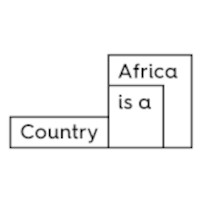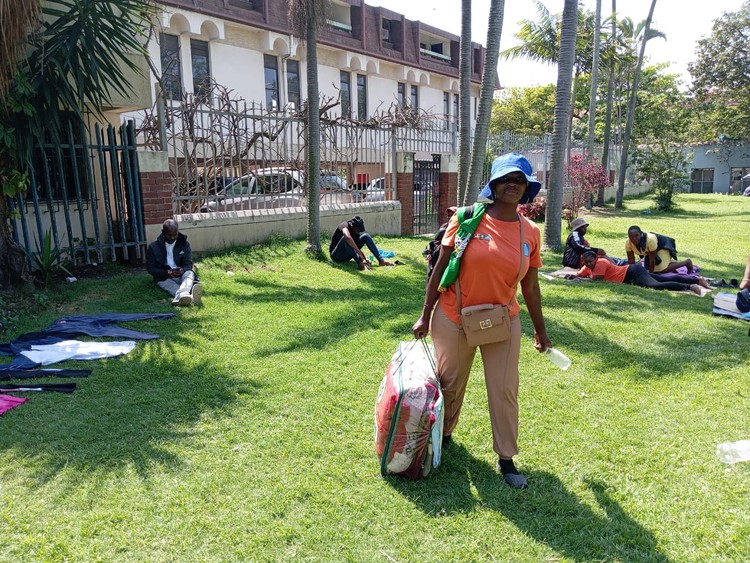Mabel Cetu is considered South Africa’s first Black woman photojournalist and documented the everyday lives of Black communities in the 1950s.
Photographer unidentified, Front cover of Zonk! African People’s Pictorial, October 1956. Photo: Courtesy of the National Library of South Africa, Cape Town.
Mabel Cetu is considered the first Black woman photojournalist in South Africa. Having worked as a nurse for more than 25 years, Cetu received photography training in 1956, only a few years after the National Party firmly introduced apartheid. She was trained by Benn Lindeque of the monthly publication Zonk!, which was the first mass-circulated magazine aimed at a Black readership in the country. Perhaps because many images appeared without credit in the publications of the time, it seems that none of her photographs have been found yet. My research has brought to light some of Cetu’s images that appeared in Zonk! shortly after her training and discusses how she dealt with common forms of gender representation.
The increased search for Cetu’s photographs in recent years, as well as the growing scholarly interest in women photographers working in South Africa before the end of apartheid, can be understood as part of the humanities’ efforts to include historically marginalized groups in a broader canon. Black women, in particular, are missing from the country’s history of photography, in part because information about them and their work does not appear or is unavailable in archives. For example, while Zonk! is accessible as microfilm in the British Library, it is only available as a hard copy in the National Library of South Africa, and the competing magazine Drum, where Cetu was also employed, and which is often referred to as masculinist, does not list her in its archive. While I do not want to dismiss the strong gender bias that prevailed in magazines of the 1950s, I use Cetu as an example to show how Black women shaped the history of photography in South Africa.
Cetu, also known as Sis May, was born into a Christian family at Viljoensdrift, Orange Free State, in 1910. Having qualified as a nurse in 1930, she worked in different clinics throughout South Africa, also after her marriage with Russell Cetu and the birth of her son Churchill. Finally, she settled in Gqeberha (formerly Port Elizabeth), where she became actively involved in the community, first in church and then in politics. From 1978, Cetu served as ward councilor for the Khayamnandi Town Council as part of the Black Local Authority, which was highly disputed by some members of the community and caused an attack on her house in 1985. Afterwards, she resigned from her political post and moved to KwaDwesi, where her adopted daughter Poppy lived and where she passed away in 1990.
Cetu’s photography training was a big announcement on the cover of the October 1956 issue of Zonk! Portraying her in the act of photographing, bold letters announce that Cetu was the “First African Woman Press Photographer.” While this magazine issue mainly shows photographs of Cetu herself, later issues printed pictures by her. These mainly illustrate everyday life in Gqeberha in staged and some rare action portraits. While static photographs were standard in the South African media landscape and this only changed in the 1950s with the advent of serial, action-packed documentary photography, the two photo-features attributed to Cetu in the 1956 and 1957 Zonk! issues show more static images of less social urgency than was the case, for example, with some photo spreads in Drum. Unlike her male colleagues Ernest Cole, Peter Magubane or Bob Gosani at Drum, who learned the photography trade in their 20s, subsequently devoting most of their time to this activity, Cetu only received her first photography training in her mid-40s and continued to work as a nurse to support her family. Thus, the photographers’ personas certainly influenced their resulting images.
Among Cetu’s individual portraits in the 1956 and 1957 Zonk! issues, two full-length portraits of young Black women posing for the camera in stylish outfits stand out. Only in these two pictures are the legs of those depicted visible, so that a full-body view of their figure and clothing is possible. Men, on the other hand, Cetu photographed mostly in suits and from the waist up. Although this observation is based on only a small number of photographs, allowing no far-reaching conclusions about Cetu’s practice, a similar dichotomy can be detected in 1950s Drum covers. These also depict gendered representations of full-body images of women in fashionable, often short clothing and cropped images of men in long suits. Several reasons influenced this type of portrayal, such as market factors, the “male gaze” of magazine editors and readers, the ambition to present counterexamples to racist portrayals, and a nascent Black celebrity cult in South Africa. The studio-like photographs of women from this period also offered them new opportunities to show themselves as modern, urban women, expressing not only the reality of their lives but also their desires and ambitions.
Cetu’s photographs are important visual documents showing the everyday life of Black communities in 1950s South Africa. Provided with details about the sitters and their relation to Gqeberha’s society, Cetu’s images published in Zonk! were important means of opposing the spatial seclusion enforced by the apartheid regime. Her images portray a vibrant society in the process of reinventing itself, influenced by traditions and modernisms. In light of these images, one must understand then, as now, the deviant image the apartheid regime drew of the country’s Black population.
While Cetu’s photographs contributed to the formation of identity and community in Gqeberba’s Black urban society 70 years ago, today they are a historical reference that a new generation of creative South Africans has long sought, and for whom Cetu’s images may once again have the potential for community building.
For more information, read the detailed African Arts article about Mabel Cetu with sources here.






